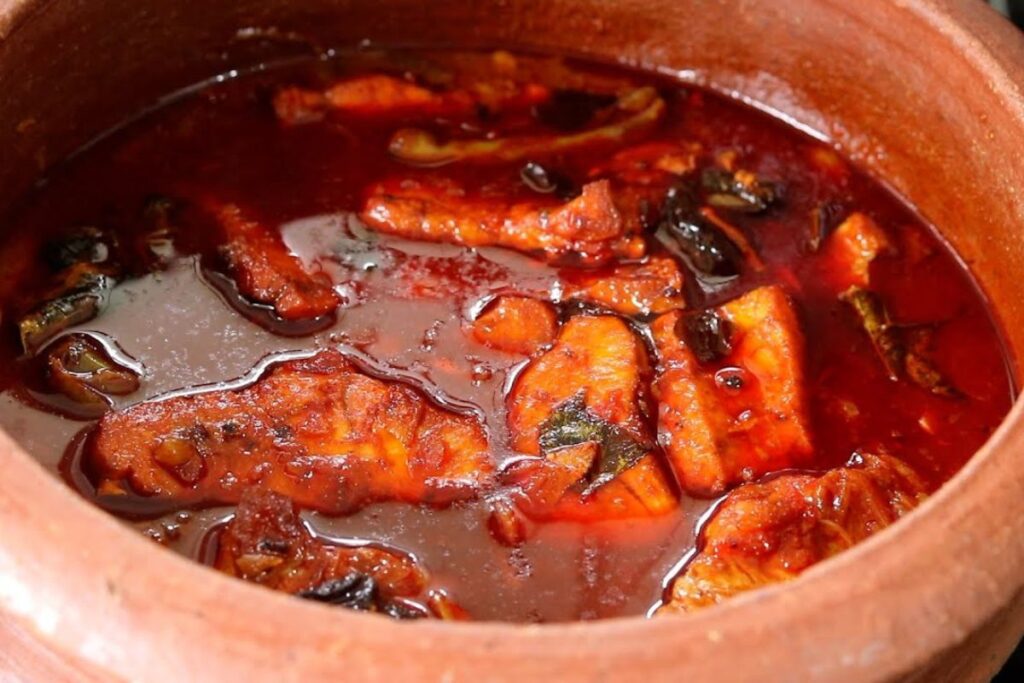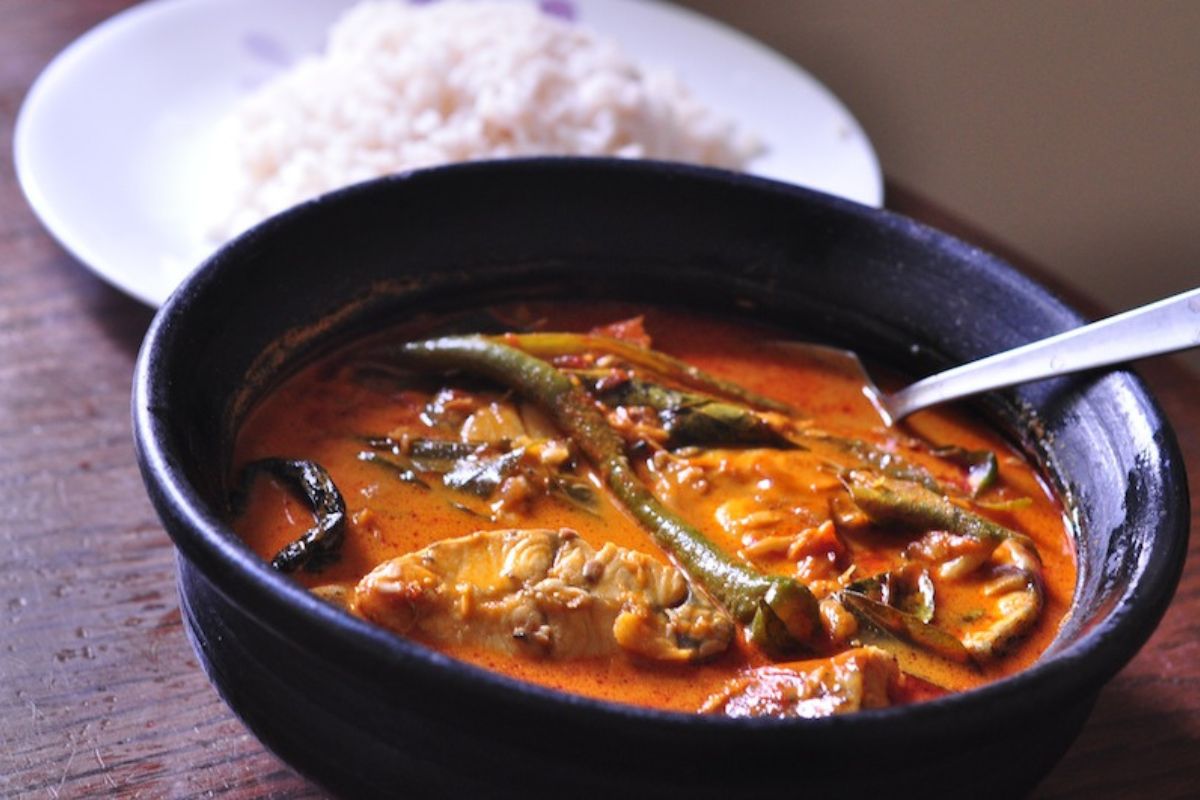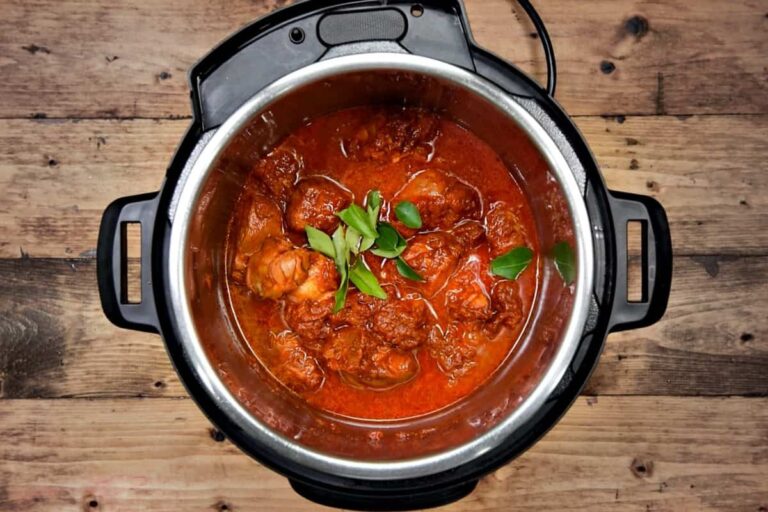Kerala Fish Curry Recipe: A Traditional South Indian Delight
Kerala Fish Curry is a flavorful, tangy, and spicy dish from the coastal state of Kerala in India. Known for its rich and aromatic flavors, this curry is made with fresh fish, coconut milk, and a blend of spices that give it a distinctive taste. The unique combination of tamarind, curry leaves, and coconut makes it a true representation of Kerala’s culinary culture.
Kerala is famous for its seafood, and this fish curry recipe captures the essence of Kerala’s coastal cuisine. If you’re craving a spicy and tangy recipe, this Kerala-style fish curry will surely hit the spot. It pairs wonderfully with steamed rice, appam, or dosa for a wholesome meal.
Ingredients for Kerala Fish Curry
- 500g fish (preferably firm fish like kingfish, pomfret, or mackerel)
- 2 tablespoons coconut oil
- 1 teaspoon mustard seeds
- 1 sprig curry leaves
- 1 onion (sliced)
- 1 tomato (chopped)
- 2-3 green chilies (slit)
- 1-inch ginger (sliced)
- 1 teaspoon garlic (minced)
- 1 teaspoon turmeric powder
- 1 teaspoon red chili powder
- 1 tablespoon coriander powder
- 1 teaspoon fennel seeds (optional)
- 1-2 tablespoons tamarind paste
- 1 cup coconut milk (fresh or canned)
- 1-2 tablespoons vinegar (optional for extra tang)
- Salt to taste
- Fresh coriander leaves (for garnish)
How to Make Kerala Fish Curry: Step-by-Step Process

1. Prepare the Fish
Clean and cut the fish into medium-sized pieces. If using frozen fish, ensure it’s properly thawed. Keep the fish aside.
2. Tempering the Spices
Heat coconut oil in a wide pan or clay pot over medium heat. Add mustard seeds, and once they begin to splutter, add the curry leaves. Let them sizzle for a few seconds to release their aroma.
3. Sautéing the Aromatics
Add the sliced onions and sauté until they turn golden brown. Add the ginger, garlic, and green chilies. Sauté for another 2 minutes until fragrant. Then, add the chopped tomatoes and cook until they soften and turn mushy.
4. Adding the Ground Spices
Add turmeric powder, red chili powder, coriander powder, and fennel seeds (if using). Stir well to combine the spices with the onions and tomatoes. Let this mixture cook for about 2-3 minutes until the oil begins to separate from the masala.
5. Adding Tamarind and Coconut Milk
Now, add tamarind paste and a little water to the pot to create a tangy base. Stir well to combine. Then, pour in the coconut milk, mixing it thoroughly with the rest of the ingredients. Allow it to simmer for 5-7 minutes, creating a rich and creamy gravy.
6. Adding the Fish
Gently add the fish pieces into the curry. Be careful not to break the fish pieces while stirring. Ensure that the fish is fully immersed in the curry sauce. Cover the pan and let the curry simmer for about 10-12 minutes on low heat, allowing the fish to cook through and absorb the flavors.
7. Final Adjustments
Once the fish is cooked, taste the curry and adjust the seasoning with salt or additional tamarind if needed. If you prefer a tangier curry, you can add a little vinegar at this point.
8. Garnish and Serve
Garnish the Kerala fish curry with freshly chopped coriander leaves. Serve it hot with steamed rice, appam, or parotta.
Tips for Making Perfect Kerala Fish Curry
- Fresh Fish: The key to making this curry delicious is using fresh fish. Firm, white fish like kingfish, pomfret, or mackerel works best in this curry.
- Coconut Oil: Kerala cuisine uses coconut oil to give dishes an authentic flavor. If you don’t have coconut oil, you can use regular vegetable oil, but the flavor will not be the same.
- Tamarind: Tamarind gives the curry a tangy, slightly sour flavor that complements the richness of the coconut milk. If you don’t have tamarind paste, you can use fresh tamarind pulp or store-bought tamarind concentrate.
- Slow Cooking: Let the curry simmer slowly to allow the flavors to meld together. Be careful not to overcook the fish, as it can become too dry and tough.
- Curry Leaves: Curry leaves are an essential ingredient in Kerala-style cooking. They add a distinct aroma and flavor to the curry.
Health Benefits of Kerala Fish Curry
- Rich in Omega-3 Fatty Acids: Fish, especially varieties like mackerel, is rich in omega-3 fatty acids, which are essential for heart health and brain function.
- Good Source of Protein: Fish provides high-quality protein that helps in building and repairing tissues, supporting immune function, and maintaining muscle mass.
- Coconut Milk: Coconut milk is high in medium-chain triglycerides (MCTs), which are beneficial for boosting metabolism and supporting fat burning.
- Antioxidants: The spices used in Kerala fish curry, like turmeric and coriander, are rich in antioxidants, which help reduce inflammation and promote overall health.
How to Serve Kerala Fish Curry
- With Steamed Rice: The traditional way to enjoy Kerala Fish Curry is with steamed white rice, which soaks up the flavorful curry and makes for a satisfying meal.
- With Appam: Appam, a type of Kerala pancake made from fermented rice flour, pairs wonderfully with fish curry. The soft and slightly tangy appam complements the rich, spicy curry.
- With Parotta: Kerala-style parottas, a type of layered flatbread, are perfect for dipping into the curry and scooping up the fish and gravy.
- With Roti or Chapati: If you prefer Indian breads, serve the curry with roti or chapati for a wholesome meal.
Kerala Fish Curry is a rich, tangy, and aromatic curry that is a must-try for seafood lovers. The blend of coconut milk, tamarind, and a variety of spices gives the curry a unique and delicious flavor that pairs perfectly with rice, appam, or parotta. Whether you’re hosting a dinner or preparing a simple meal at home, this Kerala-style fish curry is sure to impress your guests and satisfy your taste buds.




